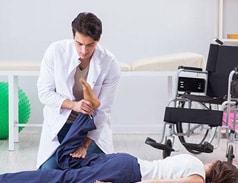Has the back of your heel been hurting lately? Hello everyone, I’m Aditi, from Miami physio and Lakelands Physio. Today we’ll be exploring a very common injury called Achilles tendinopathy, what signs you need to be looking out for and what you can do to help it.
Achilles tendinopathy is typically caused by repetitive overuse or strain on the Achilles tendon, which connects the calf muscles to the heel bone. It can result from factors such as sudden increases in training intensity, poor training technique, previous injuries , inappropriate footwear or some biomechanical deviations.
Keep watching this video to find out if you have Achilles tendinopathy or at a risk of having it.
Recognizing the signs and symptoms is crucial for early intervention. Achilles tendinopathy is typically characterized by pain and stiffness in the Achilles tendon, especially in the mornings, after prolonged periods of inactivity, at the beginning of training session or a little while after ending of the training session. Swelling, tenderness, and thickening of the tendon may also be present in such cases.
If you’re experiencing any of these symptoms, don’t delay seeking professional help. Early intervention can significantly improve outcomes and shorten your recovery time. Here at Miami physio, we can provide you with a comprehensive assessment and recommend appropriate treatment strategies.
Stick around to find out what exercises can help.
Evidence suggests resting and reducing aggravating activities can help in the early phase. A progressive exercise program is key to Rehabilitation. A tailored exercise regimen that includes specific strengthening exercises for the calf muscles, eccentric exercises to load the tendon are important . These exercises have been shown to promote the tendon healing and reduce pain.
Additionally, other interventions supported by research include extracorporeal shockwave therapy, which can stimulate tissue healing.
Finally, Achilles tendinopathy is a condition that can significantly impact your quality of life if left untreated. By understanding the causes, signs, and symptoms of this condition, you can take the necessary steps to seek professional help and start an effective treatment plan. With the support of a qualified physiotherapist and adherence to interventions, such as specific exercises and adjunct therapies, you can overcome Achilles tendinopathy and return to your active lifestyle. Remember, your journey to recovery begins with that first step towards seeking help.

